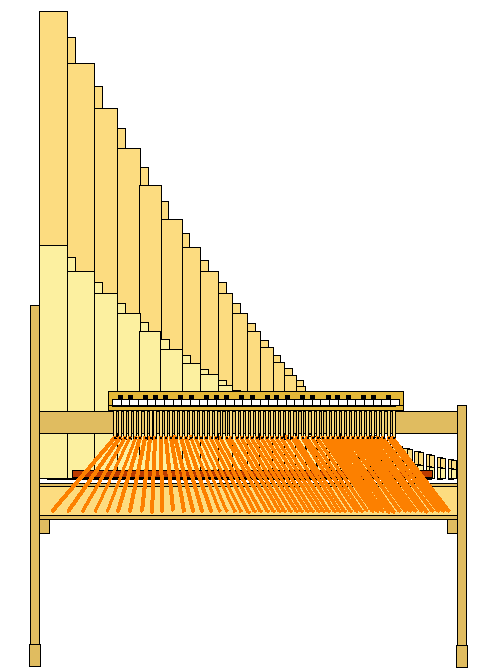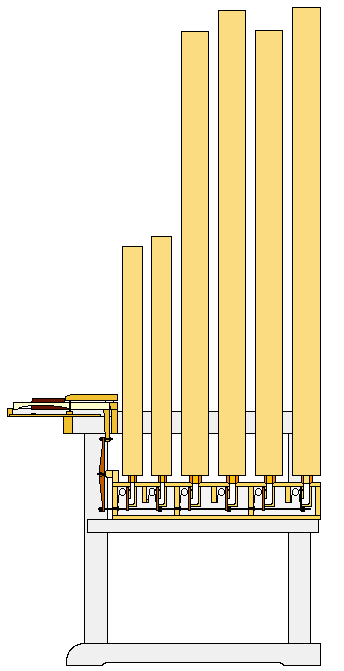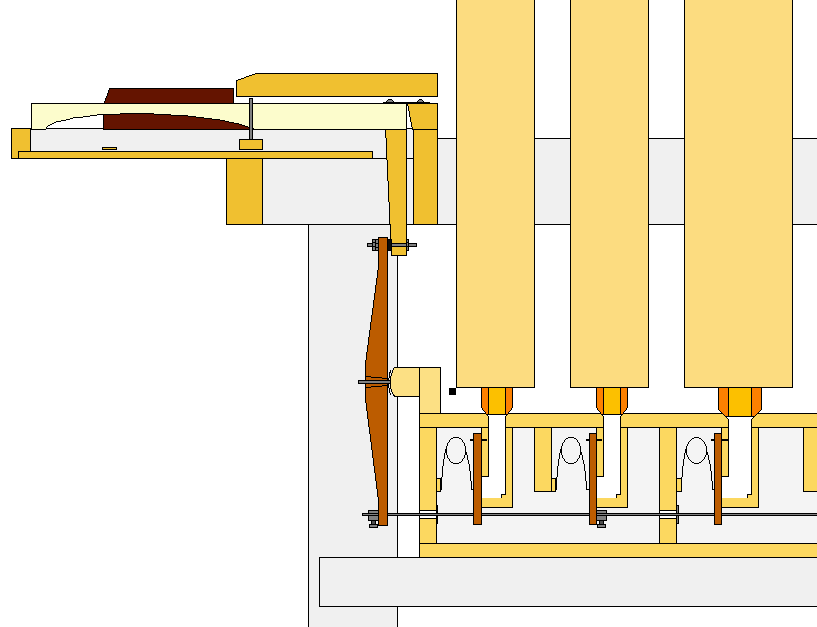'Organ 2' plansAfter having built my first organ, I immediately decided that I should build an even bigger and better organ. To this effect, I started making plans for it on my computer. Unlike the first organ, this one was going to have a design, and everything would be so much better. Of particular interest was making something that could support multiple registers of pipes, and building it in such a way that the pipes could be more easily removed for tweaking, voicing, and tuning. Seeing that I don't actually play the organ, except for improvising on it when nobody is in the house, I never was able to either justify the effort, or find the motivation to do it. Nevertheless, I think the drawings might be interesting to look at.

Front view of my 'Organ 2' designUnlike the organ I built, in this design, the valves are spaced far enough apart so that the pipes can be directly connected to the wind chest. This requires a lever mechanism of some sort to translate the motion of the keys to the windchest. In this design, this is achieved by all the slanted levers on the front.

Side view of my 'Organ 2' design

Wind chest cross section of the 'Organ 2' designOrgans that use solenoids to open valves at the pipes are of course even quicker, but to purists, this is an abomination, because it takes away the velocity sensitivity of the keys. The design of my first organ is very sensitive to how fast, and how far the keys are pressed, and I consider this to be a feature. The design here does have the potential problem that the shafts passing through the windchest must pass through various chambers in the wind chest, each of which may be pressurized differently. Thus, finding a good way of passing the shaft through a hole without too much air leakage around it, and without binding, is one of the key challenges of implementing this design. |